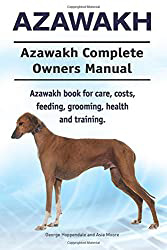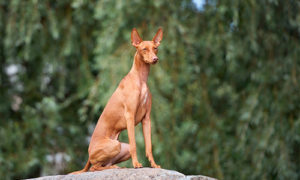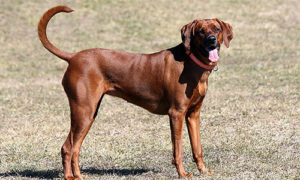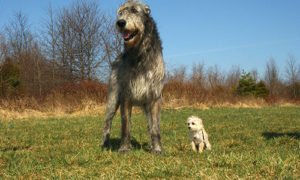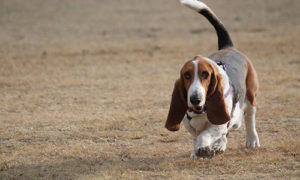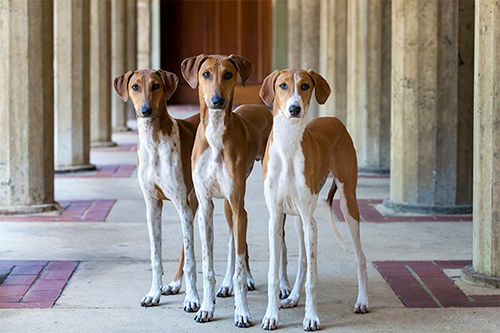
The Azawakh is a sighthound that descended from pariah dogs of the Saharan Sahel region, and the breed gets its name from the area’s Azawakh Valley. Disseminated for centuries by the Tuareg and other nomadic tribes, they developed it as a multipurpose dog to course game and guard livestock.
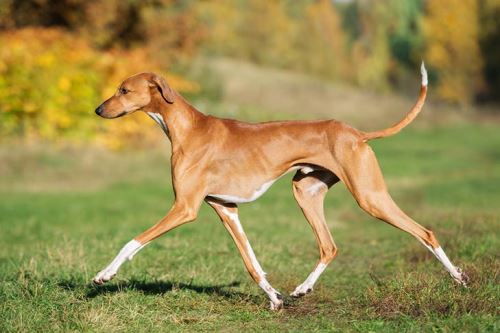
Sometimes known as the Tuareg Sloughi, the breed was first imported to Europe in the early 1970s and exhibited at FCI shows as a variety of Sloughi. In 1981, the FCI recognized the dog in Europe as the Sloughi-Azawakh, but “Sloughi” was dropped from the breed’s name in 1986.
In the mid-1980s, the first Azawakhs arrived in the United States. The breed entered the AKC’s Foundation Stock Service program in 1997, and they moved it to the Miscellaneous Class in 2011.
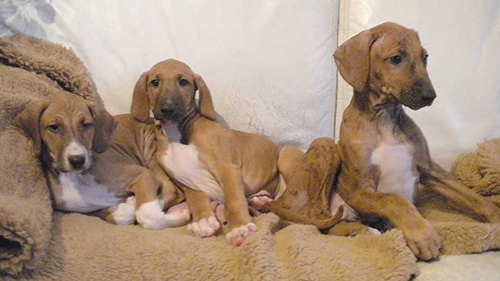
This dog is an elegant, lean sighthound with light bone, beautiful skin, long legs, a deep chest, and a long, graceful neck. The back is level or has a slight rise toward the hips; the hip bones are prominent. Its tail is long, thin, and pointed; it is set low but supported above the back’s level when the dog is thrilled.
This breed moves with a distinctive gait that is light, graceful, supple, and elastic. The head is long, narrow, lean, and chiseled with a long, straight muzzle. Their eyes are big and almond-shaped, and the overhanging ears are high set and triangular with somewhat rounded tips.
Azawakh Breed Facts
Size: males—25—29 inches, 44—55 pounds
females—23—27 inches, 33—44 pounds
Activity level: This dog is relatively calm indoors, but they have tremendous energy and endurance and must have long walks, daily activities with their owners. Without regular exercise, they can become lethargic or can exhibit destructive behavior. They tolerate heat very well but are sensitive to damp and cold weather, which needs consideration when planning an exercise schedule.
Life expectancy: 12—15 years
Azawakh Temperament
Rugged and independent, sensitive, and emotional, this breed bond strongly to their owners and are affectionate, playful companions. They tend to be standoffish and reserved with strangers and protective toward familiar individuals. An Azawakh will try to assume the alpha-dog position within a household pack, which can cause conflict with a resident dog; however, Azawakhs usually accept other dogs as their pack members.
If properly trained and socialized, Azawakhs can accept cats and small dogs, but because of the breed’s strong prey drive, you will need to supervise interactions.
Grooming
The close coat requires occasional brushing with a hound glove and occasional bathing with a mild, hypoallergenic shampoo.
Coat: Short and elegant. Belly may be completely hairless.
Color: Sand to dark red, brindle, white, black, gray, blue, grizzle, parti-color, and shades of brown, including chocolate; all colors with or without a black mask. White markings usually appear on the chest, tail tip, and legs.
Azawakh Buyer’s Guide and Advice
Owners must provide firm, positive, and consistent leadership and ongoing socialization. Fast, agile sighthounds with a strong drive to chase, you need to exercise Azawakhs in securely enclosed areas. Also, it would be best if you bonded with your Azawakhs as a genuine family member.
Parent club: American Azawakh Association; founded in 1988
Rescue: You can find a page with rescue information under “About Us” on the parent club’s home page.

